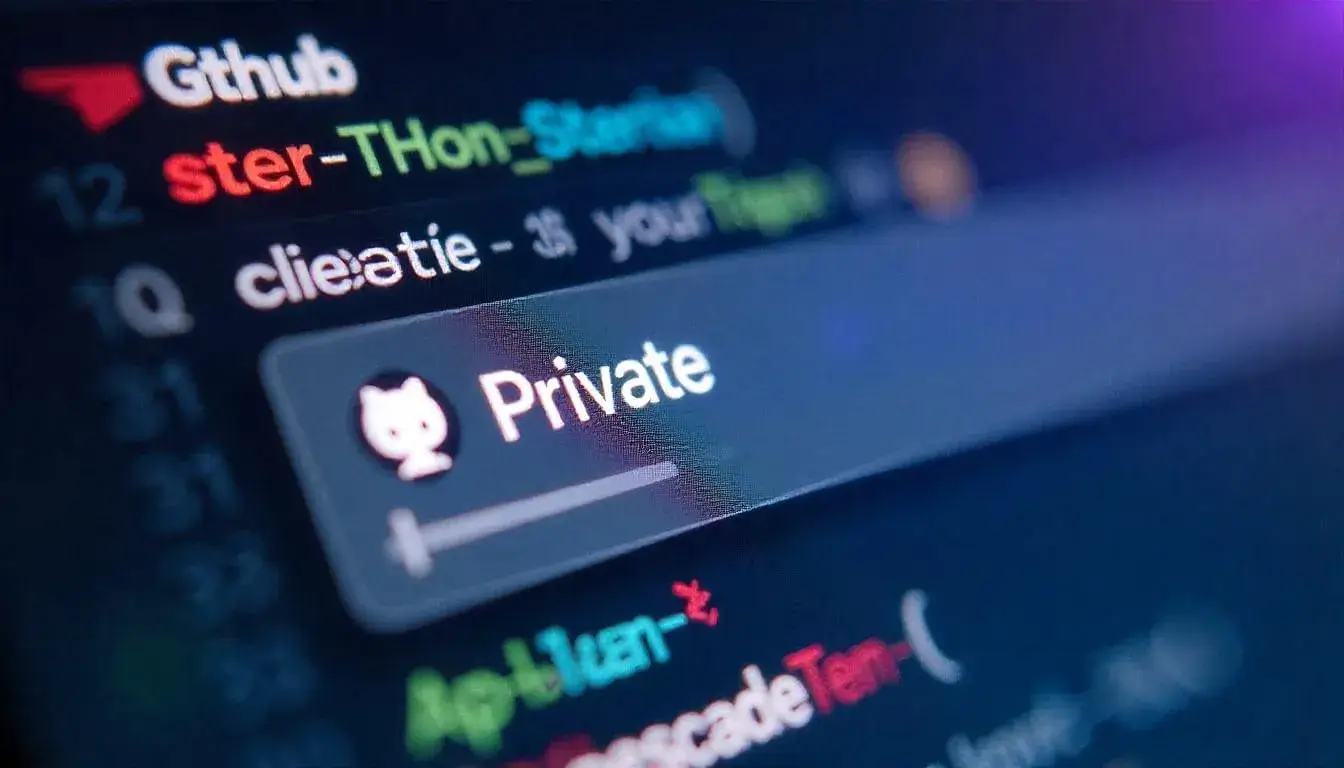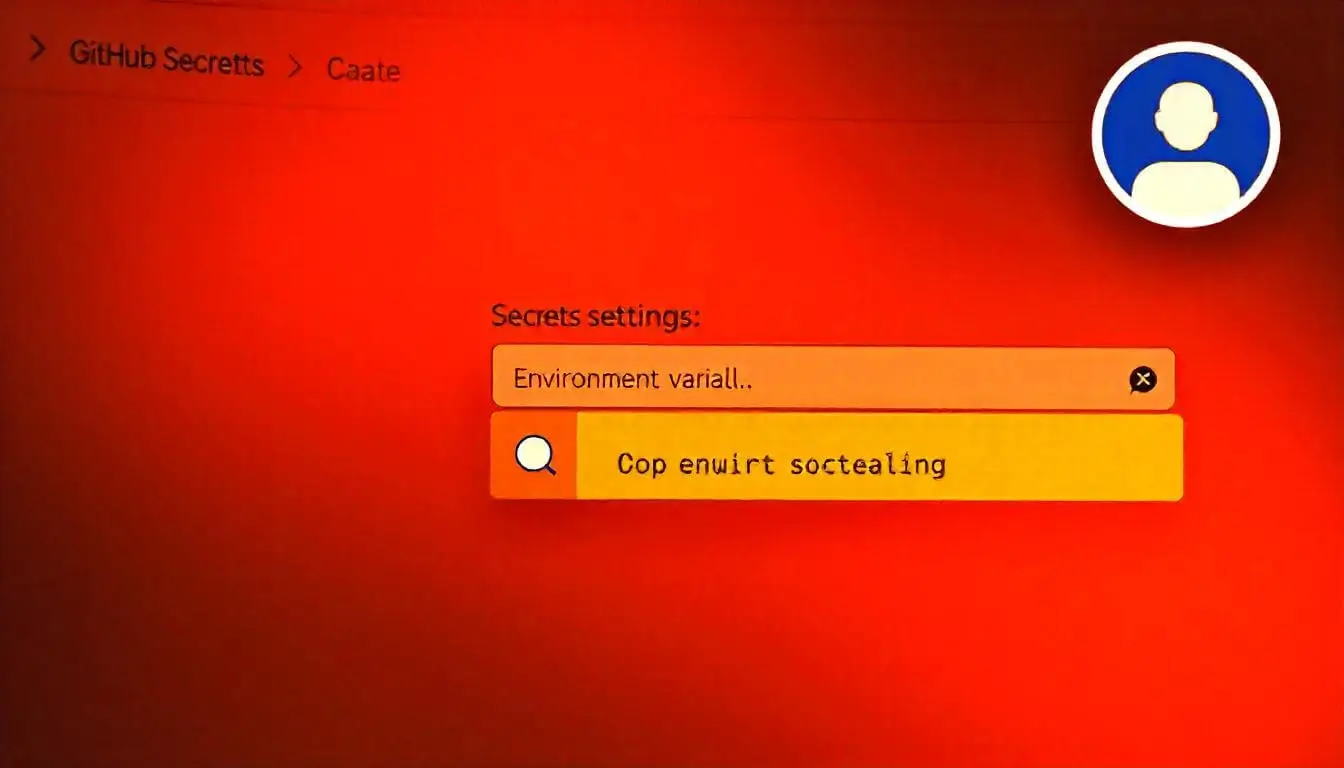Keeping your e-commerce codebase secure is critical. Your e-commerce site may contain sensitive code, customer data, and payment processing logic. If these get into the wrong hands, it could harm your business and customers. GitHub offers many tools for managing access and permissions to help protect your codebase.
In this guide, we’ll go over the best practices for securing your GitHub repository, specifically for an e-commerce project. We’ll cover setting up permissions, managing contributor roles, and securing sensitive data.
Overview of Steps:
- Set Up a Private Repository
- Assign Roles and Permissions Carefully
- Enable Two-Factor Authentication
- Use Branch Protection Rules
- Limit Access to Sensitive Files
- Monitor and Review Access Regularly
Let’s dive into each step in detail.
Step 1: Set Up a Private Repository
The first and most important step in securing your e-commerce code is to make the repository private.

- Create a New Repository:
- Go to GitHub, and click on New to create a repository.
- Name your repository (e.g.,
ecommerce-store). - Select Private as the visibility option.
- Add a README file and other necessary files.
- Why a Private Repository?
- A private repository is only accessible to people you explicitly invite.
- This protects your code from unauthorized access, keeping it hidden from the public.
Step 2: Assign Roles and Permissions Carefully
GitHub offers several roles with different levels of access. Understanding these roles is essential for securing your codebase while allowing your team to contribute effectively.
GitHub Roles Overview:
- Owner: Full access to the repository. Can manage roles and settings.
- Admin: Manage settings and add/remove contributors but cannot delete the repository.
- Write: Access to edit code, open and merge pull requests, and push code.
- Read: Can only view the code and comment on issues.
How to Assign Roles:
- Go to Your Repository Settings: In your repository, go to Settings > Manage Access.
- Invite Collaborators: Click Invite a collaborator, enter their GitHub username, and choose their role.
- Choose the Right Role:
- Developers should have Write access to make changes.
- Non-developers who only need to view code should have Read access.
- Admins should be trusted team members, as they can change repository settings.
Tip: Only grant Owner or Admin access to people who absolutely need it. Limit the number of users with these roles.
Step 3: Enable Two-Factor Authentication (2FA)
Two-Factor Authentication (2FA) adds an extra layer of security by requiring a second form of verification, like a code from a mobile app, in addition to a password.
- Enable 2FA on Your GitHub Account:
- Go to your GitHub profile, click Settings > Account security, and enable Two-factor authentication.
- Require 2FA for Your Organization (if applicable):
- If you have a GitHub organization, go to the organization settings.
- Under Security, enable Require two-factor authentication for all members.
Why 2FA?
- Even if someone’s password is stolen, they won’t be able to access your account without the second form of verification.
- This is essential for protecting sensitive e-commerce data and code.
Step 4: Use Branch Protection Rules
Branch protection rules prevent unauthorized or accidental changes to your main code branches. For an e-commerce project, this is crucial as any changes to the main codebase could affect your website’s functionality.
- Go to Branch Settings:
- In your repository, go to Settings > Branches.
- Add Branch Protection Rules:
Click on Add rule and select the branch you want to protect (e.g.,
mainorproduction). - Set Rule Options:
- Require pull request reviews before merging: This requires code to be reviewed by at least one other person.
- Require status checks to pass before merging: Use this to ensure all tests pass before code is merged.
- Restrict who can push to matching branches: Limit direct pushes to the branch to only certain roles (e.g., Admins only).
Tip: Require a pull request review on critical branches to ensure that every change is reviewed by another team member. This can prevent security vulnerabilities from being accidentally introduced.
Step 5: Limit Access to Sensitive Files
Some files in your repository may contain sensitive information, such as API keys, database credentials, or configuration files. You should restrict access to these files and avoid storing sensitive data directly in your repository.

Steps to Secure Sensitive Information:
- Use Environment Variables:
- Instead of storing sensitive information in the code, use environment variables that can be set on the server.
- Store these variables in a secure file, such as .env, and avoid pushing this file to GitHub.
- Add Sensitive Files to
.gitignore:- Add a
.gitignorefile to your repository, and list any sensitive files you don’t want to be uploaded to GitHub. - Example of a
.gitignoreentry:.env secrets.json config.yaml
- Add a
- Use GitHub Secrets for CI/CD:
- If you’re using GitHub Actions for CI/CD, use GitHub Secrets to store sensitive data, like API tokens.
- Go to Settings > Secrets and variables > Actions to add secrets that only GitHub Actions can access. Why This Matters?
- Sensitive information in your codebase is a potential security risk if someone gains unauthorized access.
- By keeping secrets out of the code, you reduce the risk of exposing your e-commerce platform to attacks.
Step 6: Monitor and Review Access Regularly
Regularly reviewing who has access to your repository is essential for security. People might leave the team or change roles, and it’s easy to forget to update access permissions.
- Review Access List:
- In Settings > Manage Access, review all collaborators and their permissions.
- Remove any users who no longer need access.
- Check Permissions on Sensitive Branches:
- Review branch protection rules and make sure only authorized team members have permission to push to important branches.
- Audit Actions:
- GitHub provides an Audit Log for organizations. You can use this to monitor who is making changes to the repository settings, branches, and code.
Tip: Schedule a security review every few months to ensure only the necessary people have access to the codebase.
Conclusion
Securing your e-commerce codebase on GitHub is a critical step for protecting your business and customer information. By carefully managing roles, permissions, and sensitive data, you can keep your code safe from unauthorized access and reduce security risks.
Key Takeaways:
- Use a private repository to keep your code hidden from the public.
- Assign roles carefully and use branch protection rules to prevent unauthorized changes.
- Store sensitive information securely, and review access permissions regularly.
By following these steps, you can build a secure foundation for your e-commerce platform, ensuring your code is well-protected while allowing your team to collaborate effectively. Remember, security is an ongoing process, so make it a habit to review and update your settings regularly.
- Start Earning: How to Make Money on Taobao Without Big Investment
- Can You Use PayPal on Taobao? Here’s What You Need to Know (2025 Update)
- AI vs. Manual Ecommerce Management: What’s More Effective in 2025?
- Shopify 1099-K Reporting Rules Are Changing: How It Affects Your Online Store
- AliExpress vs Amazon: Which Is Better for Budget Shoppers?
- Is AliExpress Safe in 2025? What Buyers Need to Know Today
- Why Is Pandabuy So Popular? A Deep Dive into Its Rise on Social Media
- How Safe Is Pandabuy? What Every New Shopper Should Know
- How to Use Pandabuy in 2025: Step-by-Step for First-Time Buyers
- Taobao Shipping Explained: Delivery Times & Costs in 2025
- Taobao Payment Not Working Internationally? Here’s Why
- Shopify Experts vs DIY: What’s Best for Your Business?
- Top Dropshipping Businesses to Start in 2025
- How to Use Taobao in English: A Step-by-Step Guide
- Taobao Login Issues & Link Sharing Problems: How to Fix Them
- Is Taobao Safe? What You Need to Know Before Buying
- Shogun Shopify: The Best Page Builder for Your Store
- Magento Marketplace vs Shopify: Which Platform is Best for Sellers?
- How to Hire a WooCommerce Expert: Skills, Costs, and Best Platforms
- Ecommerce Fulfillment Services: How to Choose the Best Solution for Your Business
- Ecommerce explicado: Tipos, beneficios y claves del éxito
- Ecommerce: ¿Qué es y cómo empezar tu tienda online en 2025?
- The Ecommerce Equation: Unlocking Profitable Online Sales Strategies
- Crack the Ecommerce Equation: The Formula for Success in 2025
- Retail Ecommerce Ventures: Transforming Brands into Online Success in 2025
- Ecommerce Photography Tips: Shoot Stunning Product Images Like a Pro
- Best Cameras and Tools for Ecommerce Photography in 2025
- Top B2B Ecommerce Solutions for 2025: Powering Your Business Growth
- How to Choose the Best B2B Ecommerce Solution: A Complete Guide
- Best Ecommerce Website Creators for 2025: Build Your Store in Minutes
- 5 Reasons Why Ecommdirect is a Game-Changer for Online Retailers
- EcommDirect: The Future of Seamless Online Shopping in 2025
- Connective Ecommerce: The Future of Seamless Online Shopping
- Top Ecommerce Web Development Services in Melbourne for 2025
- Ecommerce Web Development Melbourne: Build a High-Converting Online Store
- Top Tips for Choosing the Right Ecommerce Advertising Agency
- Why Every Online Store Needs an Ecommerce Advertising Agency
- Boost Your Sales with the Best Ecommerce Advertising Agency in 2025
- Magento vs. Other Ecommerce Platforms: Which is Best for Your Store?
- Top Features of the Magento Ecommerce Platform You Need to Know
- How to Boost Sales with the Magento Ecommerce Platform
- Top Ecommerce SEO Experts: Boost Your Online Store Traffic
- Why Hiring Ecommerce SEO Experts Is a Game-Changer for Your Store
- Ecommerce Website Development in Dubai: Build Your Store for Success
- Protect Your Online Store with the Right Business Insurance
- Top Insurance Options for Ecommerce Entrepreneurs
- Taobao Shopping Made Easy: Tips for Global Buyers
- Ecommerce Business Insurance: Why It Matters in 2025
- Why Ecommerce Business Is the Best Startup Option Today
- Ecommerce Business Marketing Strategies That Drive Sales
- 10 Common Mistakes to Avoid When Starting an Ecommerce Business
- The Future of Ecommerce Business: Trends to Watch in 2025
- Ecommerce Business Essentials: Tools, Tips, and Strategies for Beginners
- Top 10 Ecommerce Business Ideas to Boost Your Revenue This Year
- How to Start a Successful Ecommerce Business in 2025: A Step-by-Step Guide
- Unlock the Power of Odoo Ecommerce: The Ultimate Solution for Your Online Store
- Expert Ecommerce Website Development Services for Your Store
- Expert Guide to Ecommerce Website Development in Dubai: Build Your Dream Online Store
- Top eCommerce Website Development Companies: Build Your Dream Online Store Today
- Streamlining E-commerce Product Updates with GitHub Workflows
- Monetize Your E-commerce Open-source Projects: A Beginner’s Guide to GitHub Sponsors
- Collaborating with Freelancers on GitHub for E-commerce Projects
- The Role of GitHub in Supporting Multi-language E-commerce Sites
- Using GitHub Actions for E-commerce SEO Audits
- Creating and Managing API Documentation for E-commerce Platforms on GitHub
- Mastering Ecommerce Website Development with GitHub: Tools, Tips, and Best Practices
- Optimizing E-commerce Performance with GitHub Monitoring Tools
- Top GitHub Integrations for Streamlining E-commerce Development and Operations
- Managing Ecommerce Data with GitHub and Git LFS
- Version Control for E-commerce Teams: A Guide to Using Git and GitHub.
- Using GitHub Projects to Manage E-commerce Site Development
- Top GitHub Repos for Enhancing Security on Your E-commerce Site
- Securing Your E-commerce Codebase: Managing Access and Permissions in GitHub
- Managing E-commerce Data with GitHub and Git LFS
- Leveraging GitHub Pages for a Minimalist E-commerce Store


